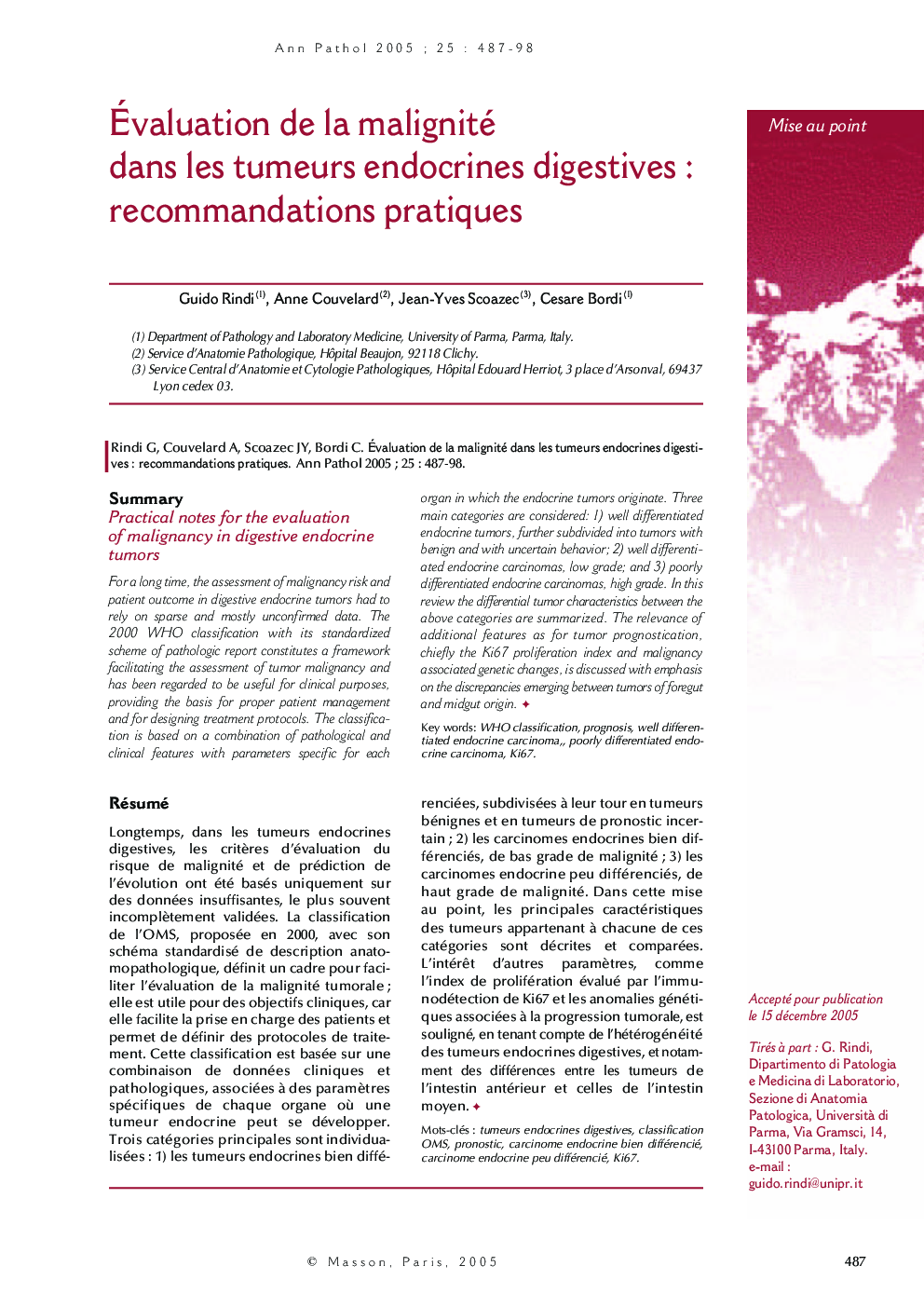| Article ID | Journal | Published Year | Pages | File Type |
|---|---|---|---|---|
| 9364741 | Annales de Pathologie | 2005 | 12 Pages |
Abstract
For a long time, the assessment of malignancy risk and patient outcome in digestive endocrine tumors had to rely on sparse and mostly unconfirmed data. The 2000 WHO classification with its standardized scheme of pathologic report constitutes a framework facilitating the assessment of tumor malignancy and has been regarded to be useful for clinical purposes, providing the basis for proper patient management and for designing treatment protocols. The classification is based on a combination of pathological and clinical features with parameters specific for each organ in which the endocrine tumors originate. Three main categories are considered: 1) well differentiated endocrine tumors, further subdivided into tumors with benign and with uncertain behavior; 2) well differentiated endocrine carcinomas, low grade; and 3) poorly differentiated endocrine carcinomas, high grade. In this review the differential tumor characteristics between the above categories are summarized. The relevance of additional features as for tumor prognostication, chiefly the Ki67 proliferation index and malignancy associated genetic changes, is discussed with emphasis on the discrepancies emerging between tumors of foregut and midgut origin.
Related Topics
Health Sciences
Medicine and Dentistry
Pathology and Medical Technology
Authors
Guido Rindi, Anne Couvelard, Jean-Yves Scoazec, Cesare Bordi,
